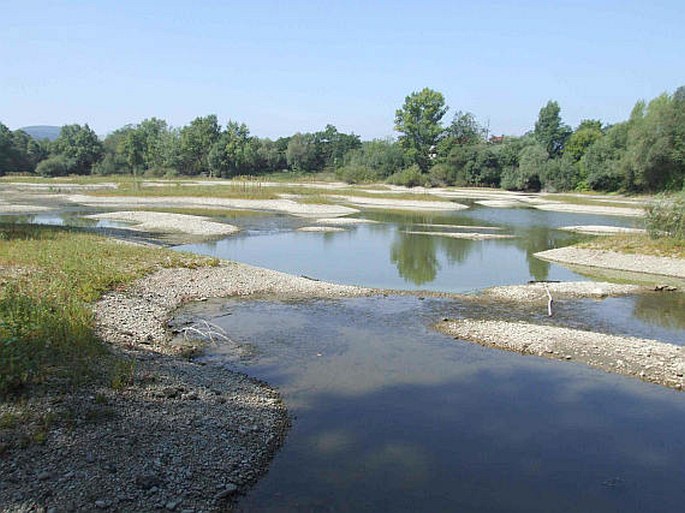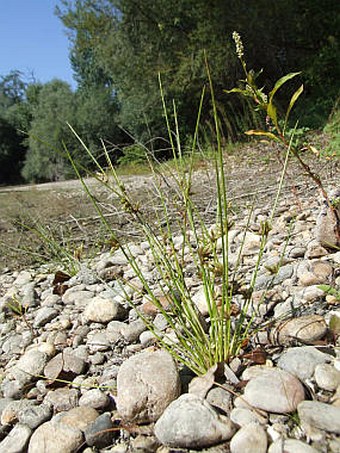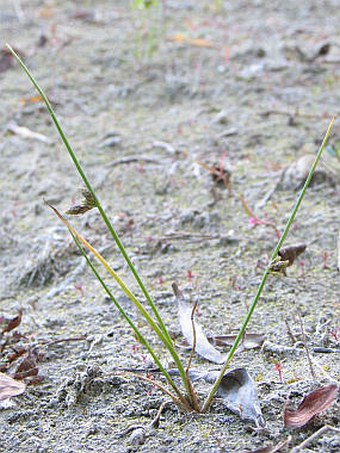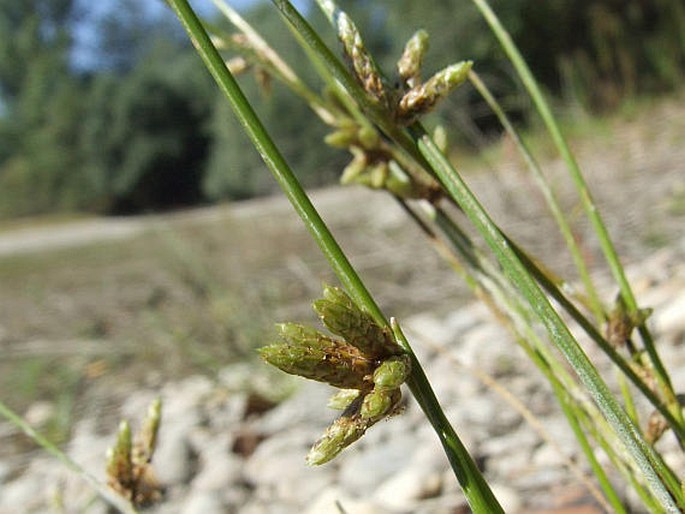Syn.: Scirpus supinus L., Isolepis supina (L.) R. Br., Schoenoplectus melanospermus (C. A. Mey.) Grossh., Scirpus melanospermus C. A. Mey. in Mém.
Family: Cyperaceae Juss.

Distribution: Europe, Northern Africa, Madagascar, Turkey, Caucasus, Southern Siberia, Kazakhstan, Iran and from Pakistan to the Far East.
Ecology: The species occupy wet disturbed ground by standing water, at pools, field depressions, rice fields and rural roads.

Description: Annual plant forming tufts, 5–30 cm tall. Roots are fibrous, small. Stem 0.8–2 mm diameter, terete or distal parts obscurely trigonous, grooved, green or greyish green, smooth. Sheaths up to 65 mm long, 2–3; ligule up to 0.8 mm long, scarious; blades reduced to mucro or, in uppermost sheath, most often green, up to 50 mm long. Inflorescence 7–20 mm diameter, congested to spherical group of (1–)3–15 spikes. Spikes 5–12 mm, ovoid; glumes rather tightly imbricating, 2–4 mm, cymbiform, brown or reddish brown. Perianth reduced, bristles 3–4, occasionally elongated, unequal, longest shorter than fruit; stamens 3, anther 0.5–0.7 mm long; stigmas 3. Achene ca 1.5 x 1 mm, widely obovoid, apiculate, black brown. The species flowers from June to August.
Endangering and Protection: In Central Europe occurs usually rare, included to Red Books (Czechia, Poland, Slovakia) and Red Lists (Austria, Czechia, Germany, Poland, Slovakia).



These images were taken in Slovakia, Chľaba (September 2007).


